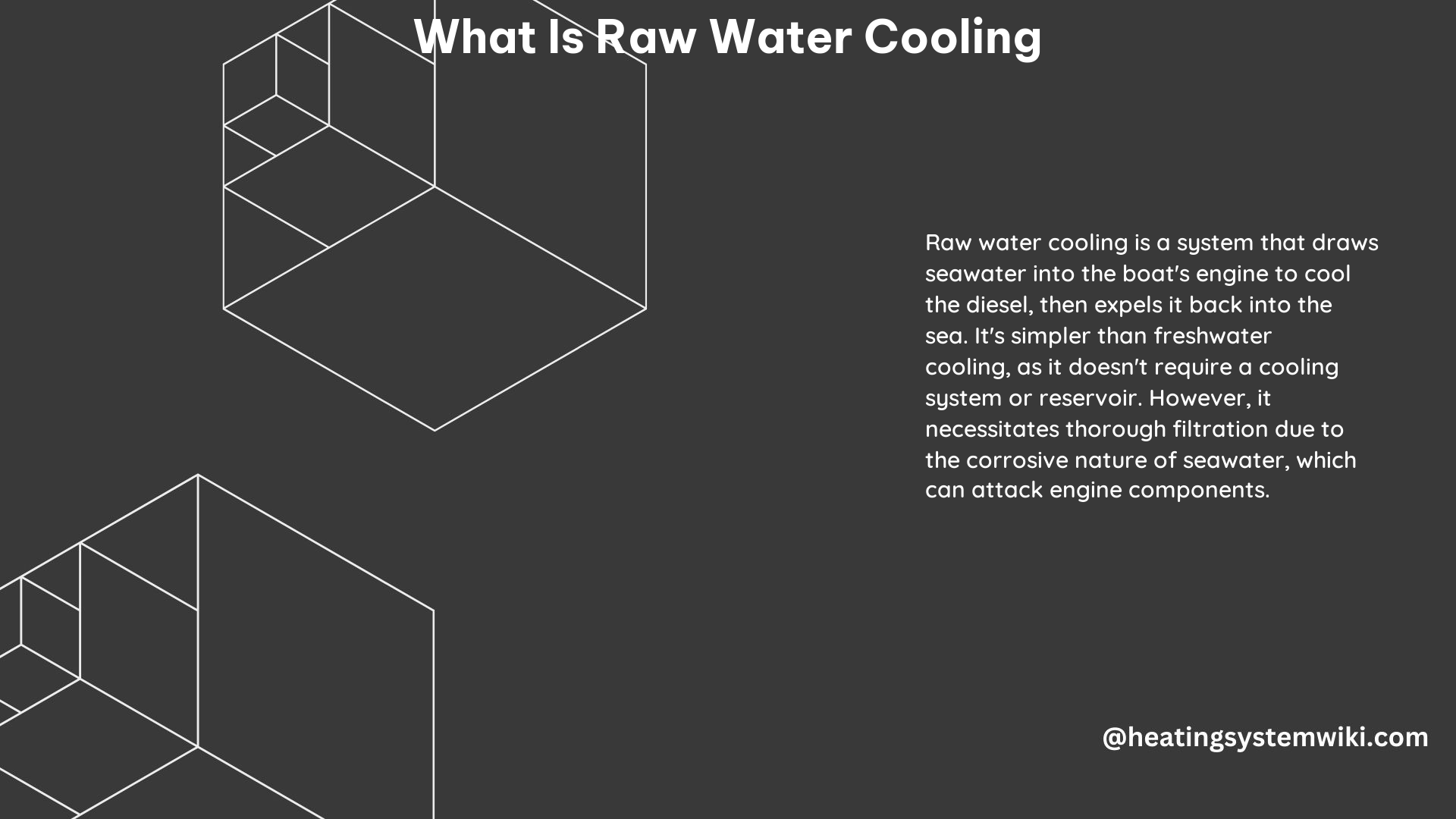Raw water cooling is a method of cooling marine diesel engines by using seawater or any other untreated water source from outside the boat. This system is commonly used in boats and ships due to its simplicity and cost-effectiveness. The raw water cooling system circulates water from outside the boat through the engine to absorb the heat generated by the engine’s operation. The heated water is then expelled back into the water body, thus maintaining a cooling effect on the engine.
Technical Specifications of Raw Water Cooling
Raw Water Inlet
The raw water cooling system begins with an inlet that draws water from outside the boat. This inlet is typically located below the waterline and is equipped with a strainer to prevent large debris from entering the system. The size of the raw water inlet can vary depending on the engine size and cooling requirements, but a common size is 1-1/2 inches in diameter.
Seacock
The raw water inlet is connected to a seacock, which is a valve that controls the flow of water into the system. The seacock can be manually or electrically operated and is used to prevent flooding in case of emergencies. The seacock is typically made of bronze or stainless steel and is designed to withstand the pressure and corrosive environment of the marine environment.
Heat Exchanger
The raw water then passes through a heat exchanger, which is a device that transfers heat from the engine coolant to the raw water. The heat exchanger is filled with tubes that allow the raw water to flow around them, absorbing the heat from the engine coolant. The heat exchanger is typically made of copper or brass and is designed to withstand the high temperatures and pressures of the engine cooling system.
| Heat Exchanger Specifications | |
|---|---|
| Material | Copper or Brass |
| Tube Diameter | 1/2 inch to 1 inch |
| Tube Length | 12 inches to 36 inches |
| Tube Count | 10 to 50 |
| Pressure Rating | 50 psi to 150 psi |
Wet Exhaust
After passing through the heat exchanger, the raw water is expelled through the wet exhaust, which is a system that directs the water and exhaust gases away from the boat. The wet exhaust is designed to reduce noise and prevent water from entering the engine. The size of the wet exhaust can vary depending on the engine size and cooling requirements, but a common size is 2 inches to 4 inches in diameter.
Impeller Pump
The raw water is pumped through the system using an impeller pump, which is a type of pump that uses a rotating impeller to create suction and pressure. The impeller pump is typically made of bronze or stainless steel and is designed to withstand the corrosive environment of the marine environment. The size of the impeller pump can vary depending on the engine size and cooling requirements, but a common size is 1-1/2 inches to 3 inches in diameter.
DIY for Raw Water Cooling

Installing a raw water cooling system can be a complex task, and it is recommended to seek professional help. However, if you have the necessary skills and knowledge, here are the general steps to install a raw water cooling system:
-
Locate the Raw Water Inlet: Identify the location of the raw water inlet on your boat, which is typically located below the waterline. Install a strainer to prevent debris from entering the system.
-
Install the Seacock: Install a seacock at the raw water inlet to control the flow of water into the system. The seacock should be easily accessible and operable.
-
Install the Heat Exchanger: Mount the heat exchanger in a location that allows for easy access and maintenance. Connect the heat exchanger to the engine coolant system and the raw water system.
-
Install the Impeller Pump: Mount the impeller pump in a location that allows for easy access and maintenance. Connect the pump to the raw water system and ensure that it is properly primed and operational.
-
Install the Wet Exhaust: Install the wet exhaust system to direct the water and exhaust gases away from the boat. Ensure that the wet exhaust is properly routed and secured.
-
Test the System: Once the system is installed, test it to ensure that it is working properly and that there are no leaks. Adjust the seacock as needed to ensure proper water flow and cooling.
It is important to note that the specific installation requirements may vary depending on the size and type of your boat, as well as the engine and cooling system specifications. It is recommended to consult with a professional marine mechanic or engineer to ensure that the raw water cooling system is installed correctly and safely.
References
- Marine Diesel Engines, Part 1 – Overview of the Raw Water System: https://www.youtube.com/watch?v=wVqMaXZjrMA
- Raw water cooling vs. fresh – basics, please: https://forums.ybw.com/threads/raw-water-cooling-vs-fresh-basics-please.376242/
- Freshwater cooling draws raw water through a heat exchanger, then out through the exhaust: https://clubsearay.com/index.php
